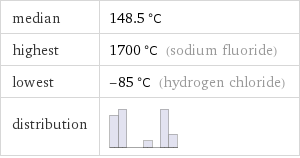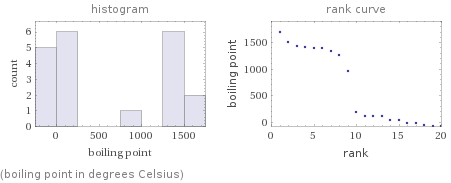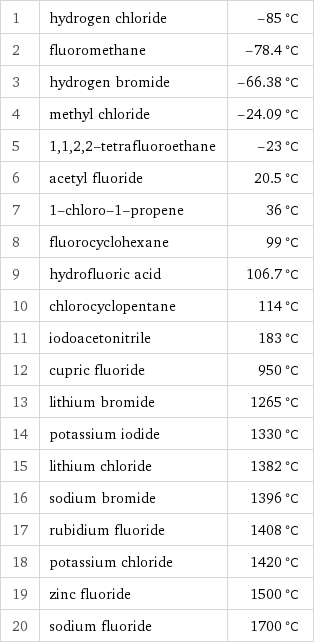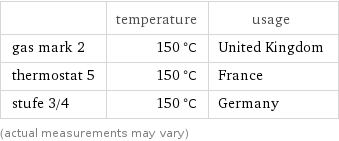Input interpretation

halogenated compounds | boiling point
Summary

median | 148.5 °C highest | 1700 °C (sodium fluoride) lowest | -85 °C (hydrogen chloride) distribution |
Distribution plots

(boiling point in degrees Celsius)
Boiling point rankings

1 | hydrogen chloride | -85 °C 2 | fluoromethane | -78.4 °C 3 | hydrogen bromide | -66.38 °C 4 | methyl chloride | -24.09 °C 5 | 1, 1, 2, 2-tetrafluoroethane | -23 °C 6 | acetyl fluoride | 20.5 °C 7 | 1-chloro-1-propene | 36 °C 8 | fluorocyclohexane | 99 °C 9 | hydrofluoric acid | 106.7 °C 10 | chlorocyclopentane | 114 °C 11 | iodoacetonitrile | 183 °C 12 | cupric fluoride | 950 °C 13 | lithium bromide | 1265 °C 14 | potassium iodide | 1330 °C 15 | lithium chloride | 1382 °C 16 | sodium bromide | 1396 °C 17 | rubidium fluoride | 1408 °C 18 | potassium chloride | 1420 °C 19 | zinc fluoride | 1500 °C 20 | sodium fluoride | 1700 °C
Unit conversions for median boiling point 148.5 °C

421.7 K (kelvins)

299.3 °F (degrees Fahrenheit)

759 °R (degrees Rankine)

118.8 °Ré (degrees Réaumur)

85.46 °Rø (degrees Rømer)
Comparison for median boiling point 148.5 °C

(70 to 100) °C below autoignition temperature of paper (218 to 246 °C)

21.5 °C above hottest temperature of a Concorde nose tip (127 °C)

48.52 °C above water boiling point (at standard pressure) (99.9839 °C)
Corresponding quantities

Thermodynamic energy E from E = kT: | 36 meV (millielectronvolts)

Blackbody energy flux Φ from Φ = σT^4: | 1792 W/m^2 (watts per square meter)

Approximate luminous exitance from a planar blackbody radiator perpendicular to its surface: | 5.4×10^-13 lx (lux)
Nearest corresponding gas marks for median boiling point 148.5 °C (degrees Celsius)

| temperature | usage gas mark 2 | 150 °C | United Kingdom thermostat 5 | 150 °C | France stufe 3/4 | 150 °C | Germany (actual measurements may vary)